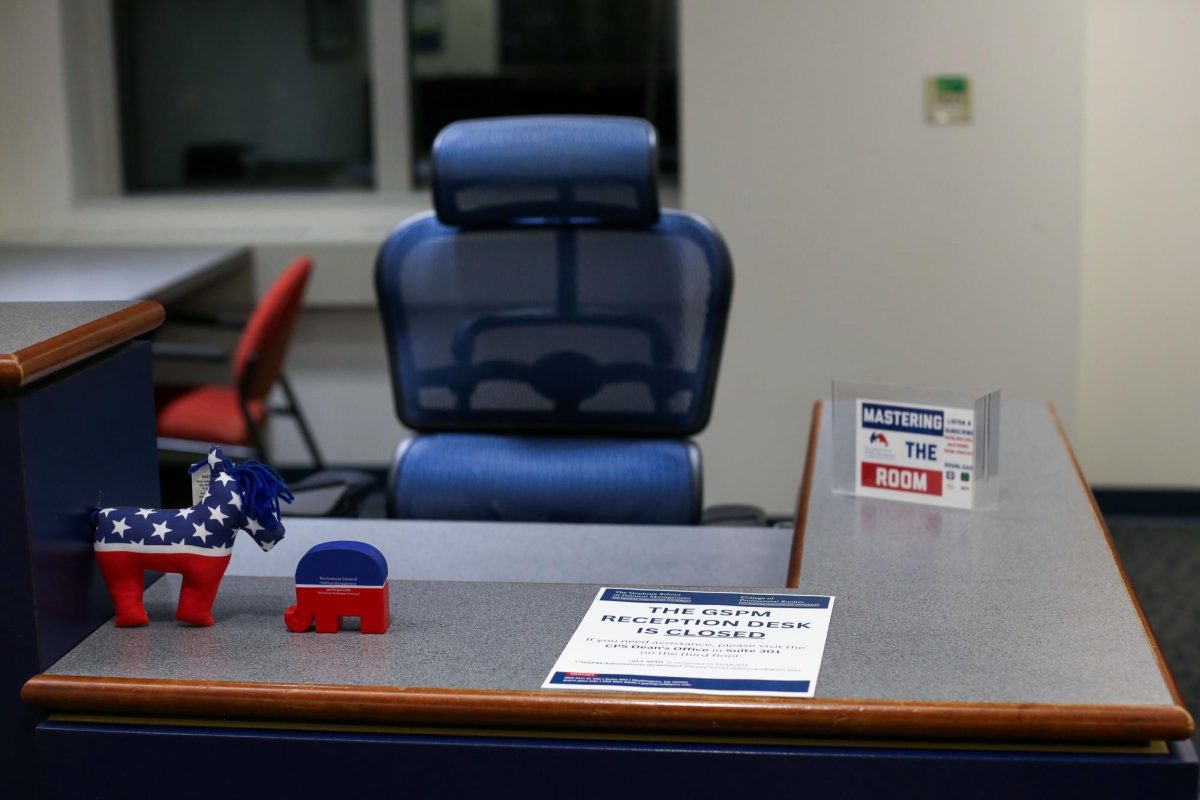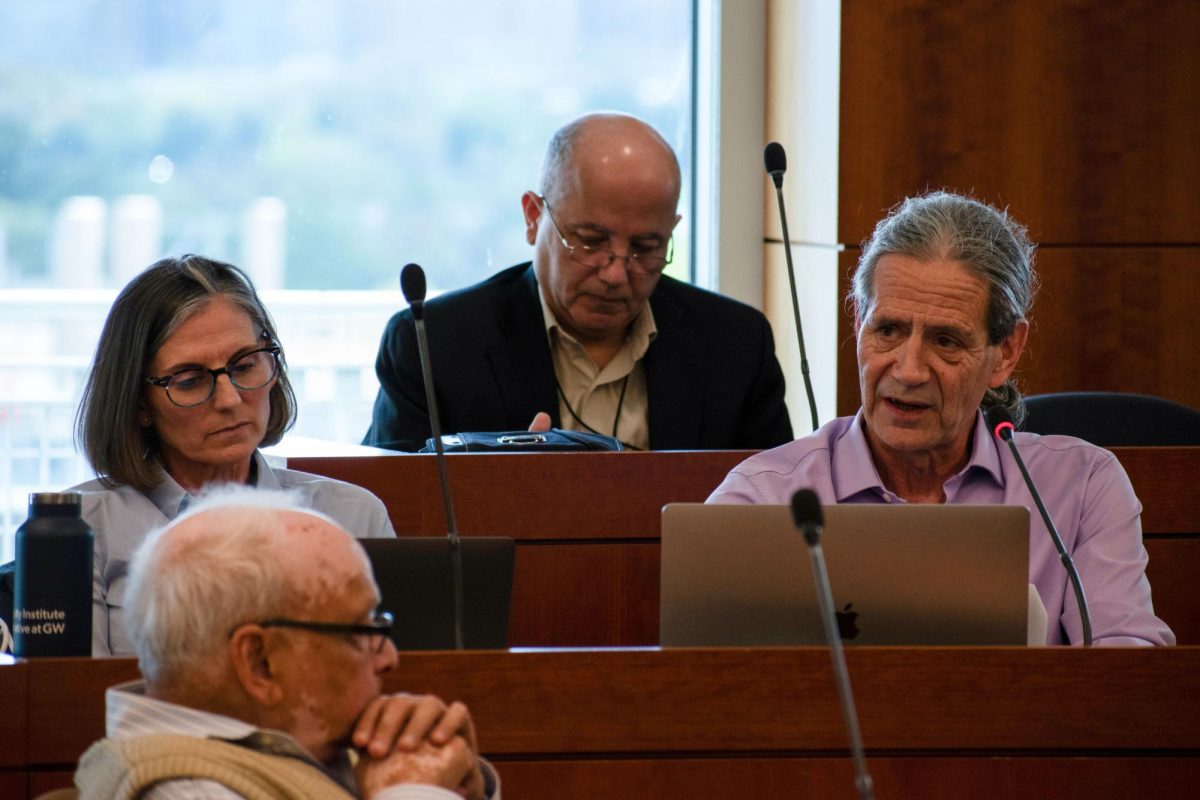Updated: Oct. 31, 2022 at 4:36 p.m.
University leaders tabbed joining the Association of American Universities as a top priority in GW’s new presidential profile, but experts said GW needs to increase the amount of competitive federal research grants it receives and strengthen its academic programs to get there.
The AAU, an invite-only organization composed of 65 leading research universities in the United States and Canada, facilitates regular meetings with leaders from member institutions to share best practices for acquiring research funding, employing highly awarded and cited faculty and lobbying the federal government on education policy. Experts in higher education said membership is difficult to acquire and maintain because of the types of grants and programs an institution must have to be a member, but the prestige and connections with other elite universities are worth the effort, despite the nearly $140,000 annual membership fee.
Published in early October, GW’s presidential profile – which lays out the characteristics, experiences and priorities the search committee members want to see in presidential candidates – states the University’s goal to become the first AAU member in the District will “likely take years to achieve.” The profile states the first step to becoming a member would be to become one of the top 50 ranked schools in U.S. News and World Report’s annual college ranking list – where GW is currently at No. 62.
The presidential profile also states that GW’s next president should strengthen the School of Medicine and Health Sciences by increasing the amount of funding it receives from the National Institutes of Health and growing its research and clinical capacities, which could increase its chances at joining the AAU.
“In summary, GW’s next president will need to convey unparalleled ambition for the University, a commitment to and the ability to raise the resources to fund this new agenda, and work collaboratively to realize that ambition with all of GW’s key constituents as partners,” the profile states.
Interim University President Mark Wrighton, who will likely remain at GW for the remainder of the academic year, served as chairman of the AAU from 2004 to 2005.
Invitation to the AAU is also reliant on the money the University can bring in from outside grants and the number of faculty who are members of the National Academies of Sciences, Engineering and Medicine, the number of faculty who receive prestigious academic awards and fellowships and the amount of research citations the University can produce, according to the AAU’s website. The AAU also considers other types of research funding and the quality and quantity of undergraduate, doctoral and postdoctoral programs, according to the AAU’s website.
A spokesperson for the AAU declined to comment on the AAU’s membership criteria or on the work it conducts with universities.
University spokesperson Josh Grossman said a university’s membership in the AAU is an “indicator of excellence” and would bolster GW’s mission as a comprehensive research university.
“While AAU membership will take time to achieve, the university aspires to work with all members of its community on the strategy, goals, and road map, with the hope of joining this distinguished group of leading comprehensive research universities,” he said.
Grossman declined to comment on how officials intend to gain membership or how close GW is to becoming a member.
Seven of GW’s 12 peer schools are currently members of the AAU, including the universities of Pittsburgh, Southern California and Rochester and Boston, New York, Tufts and Tulane universities. In its annual national college ranking list published in September, Forbes ranked GW one spot below NYU and 36 and 54 spots above the University of Rochester and Tulane University, respectively.
David Peterson, the Lucken professor of political science and member of the Iowa State University faculty senate executive board, said being a member of the AAU brings prestige to an institution by association because of the number of large research institutions that are already members.
“The AAU is the leading comprehensive research universities in America that sort of defined themselves, and if you look at the list, that’s really what it is,” Peterson said. “And so being in the club is a sort of signal and an indicator of research prestige.”
The AAU website does not lay out the specific numbers or benchmarks that prospective members should meet, but Peterson said the factors the AAU considers in determining membership does not fit for all types of research institutions. He said some institutions are increasingly starting to put more resources into financial aid and scholarships instead of other programs, which may help schools improve the quality of their student bodies, but not be as prestigious to the AAU.
“The AAU doesn’t consider things like four-year graduation rates,” he said. “It doesn’t consider things like the percentage of students with Pell grants. We’re a land grant school, we have a mission of science with practice, of being an engine to lift up the middle class and be an engine of social mobility. And the AAU doesn’t care. I mean, that’s not their criteria.”
Once accepted into the AAU, continued membership is not guaranteed, according to the AAU website. Member universities must maintain levels of research and education on par with peers within the organization and above schools outside of it.
Bernard Arulanandam – the vice provost of research at Tufts University, which has been a member of the AAU since last year – said invitation to the association brings higher status not just to the university, but also to students, who can use the sign of academic prestige to market themselves better to potential employers.
“The fact that we have this distinction further provides the marketability of our graduates,” Arulanadam said. “I mean, they’re coming from an AAU institution.”
Arulanandam said Tufts’ affiliation with the organization has led to a greater number of citations in academic journals and collaborative research published across different fields.
“They really advance the cause of all things higher education from a vibrant and robust undergraduate experience and the inquiry of graduate education and really creating thought leaders that will go out into this knowledge economy that we have here,” he said.
Fred Cate, the vice president for research at Indiana University, which has been a member of the AAU since 1909, said membership in the organization encourages universities to compete with other member institutions on the quality of their academic programs. He said universities in the AAU had to stay within the academic standards of its top 60 members if they hoped to avoid being dropped from membership.
“We may think we’re doing great if we’re increasing by one percent a year, but if the other members are increasing by five percent a year, it helps spur us to, you know, want to do better,” he said.
Cate said being a member of the AAU can also help institutions attract prestigious and well-known faculty.
“I think for faculty in particular, they’ve been regarded as an indicator of quality,” he said. “So when people are recruiting for jobs, it may be a little easier to recruit in some areas, at least, if you can say ‘Look, we’re in a member institution.’”
This post has been updated to include a comment from University spokesperson Josh Grossman.








